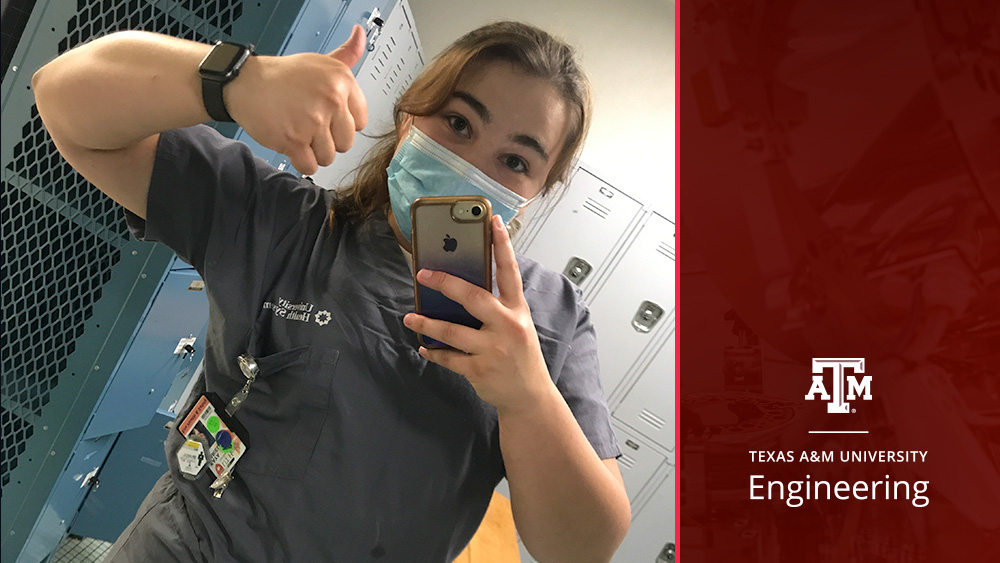
In the midst of the COVID-19 pandemic, Kaya Mariello, a senior in the Department of Nuclear Engineering at Texas A&M University, found herself balanced on the precipice between academia and medicine during her internship at The University of Texas Health Science Center at San Antonio.
“Thank you to Jennifer Cerecero, Dr. Kenneth Peddicord, Dr. Holly Paschall, Dr. Mike Charlton and everyone over at The University of Texas Health Science Center at San Antonio for making my unique summer so amazing,” Mariello said.
Working in the radiation safety department, her internship was broken into three main aspects. First, she had engineering-based responsibilities, such as Geiger counter calibration, radiation lab inspections and area surveys, which were conducted in the health science center. Second, she conducted an independent research project when she measured and confirmed the decay activity of Fluorine-18 using a liquid scintillation counter. Third, she took part in medicinal-oriented tasks that brought her into the hospital to interact with patients.
It was the latter that left a lasting impression on Mariello.
“I never thought I was going to like patient interaction,” she said. “But then, the first patient I interacted with, I remember calling my mom after, because she's a nurse, and being like, ‘I can't believe people do this on a daily basis.’ Because it's difficult to watch people go through some of the hardest times in their life. But it was amazing to be there, and it was an honor to be part of the team that was helping and supporting them.”
While in the nuclear medicine department of the hospital, Mariello not only worked with patients during their radiation and other nuclear treatments, but also gained first-hand experience and knowledge about various machines, imaging technologies, injections, proper handling of nuclear materials and basic treatment methods. As she explained, examples of this included learning how to match up CT and MRI scans, how much treatment a cancer patient will need and determining the dose amount for an iodine treatment for outpatient surgeries.
Her experience was so impactful that it eventually led Mariello to changing her career path entirely — shifting away from a lab scene and into a scenario where she would be more involved with patients.
“I initially thought I was going to go into med school for something like genetic research,” Mariello said. “I always thought I’d just do something in a lab with a close-knit team. But then there's what’s called medical physics dosimetry, where you work on treatment plans. And now, I want to help patients and I want to be part of the treatment process. I want to be that support system. I want to be able to interact with people and actually see a change.”